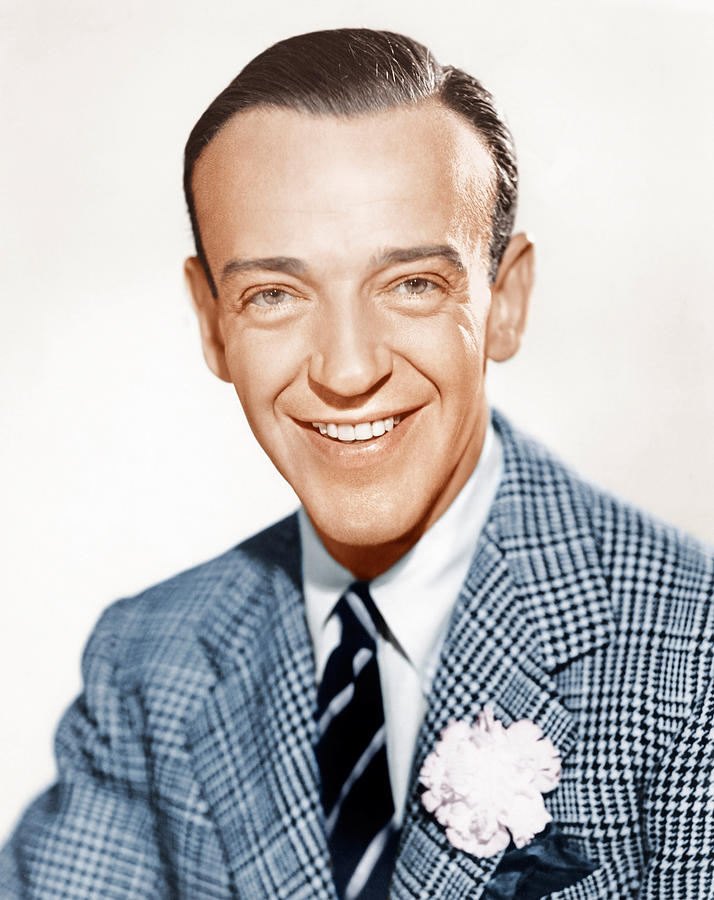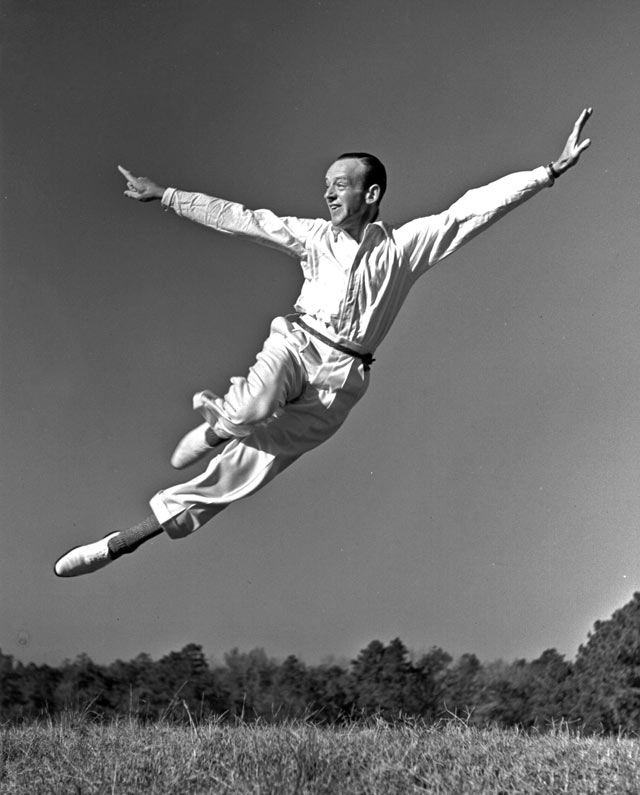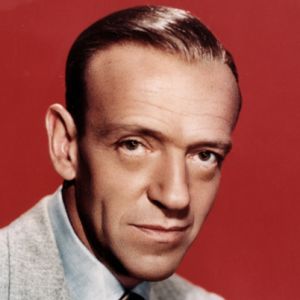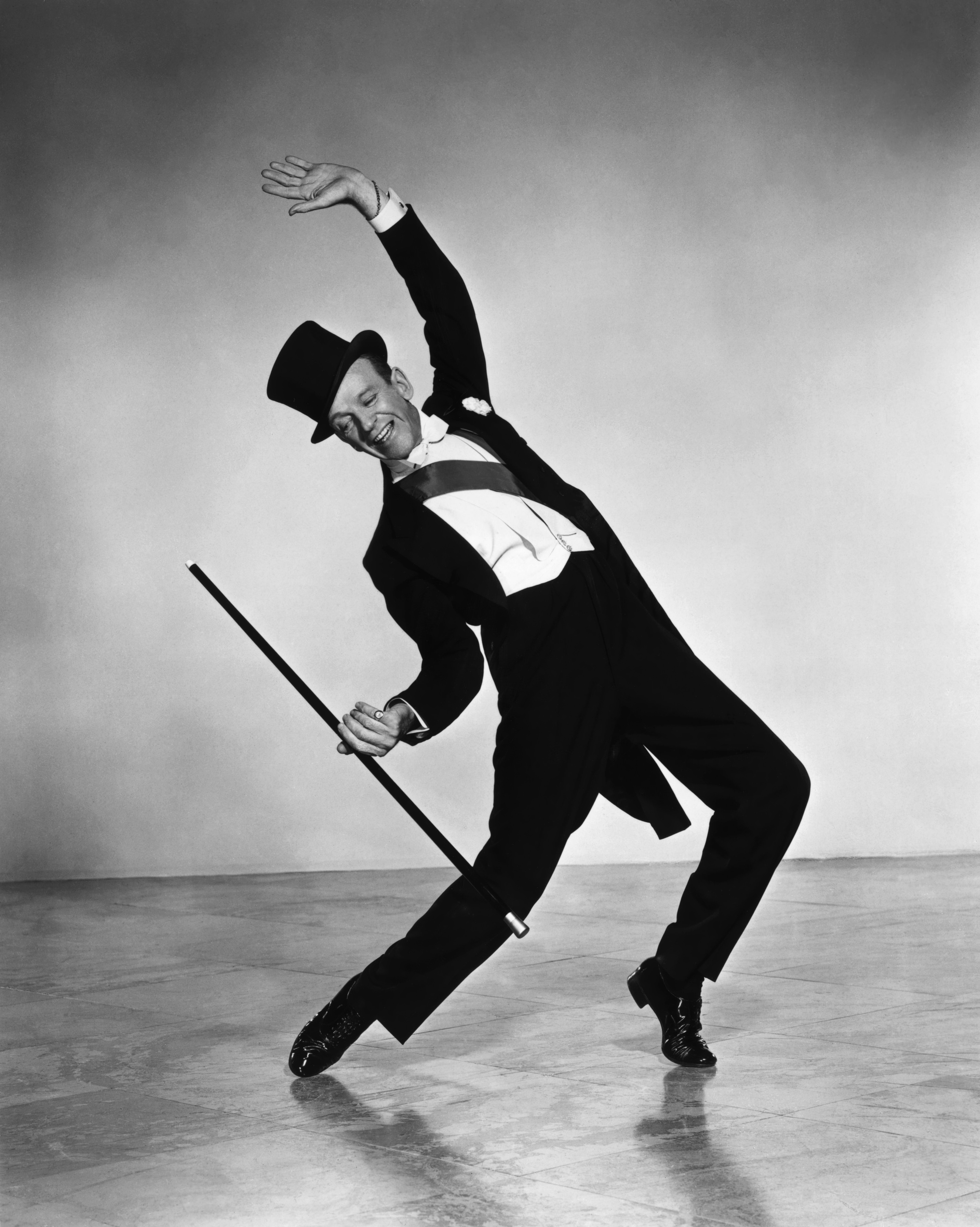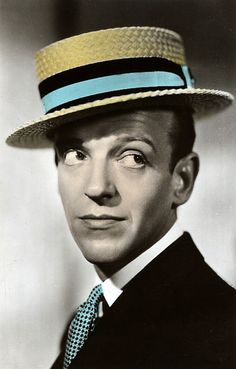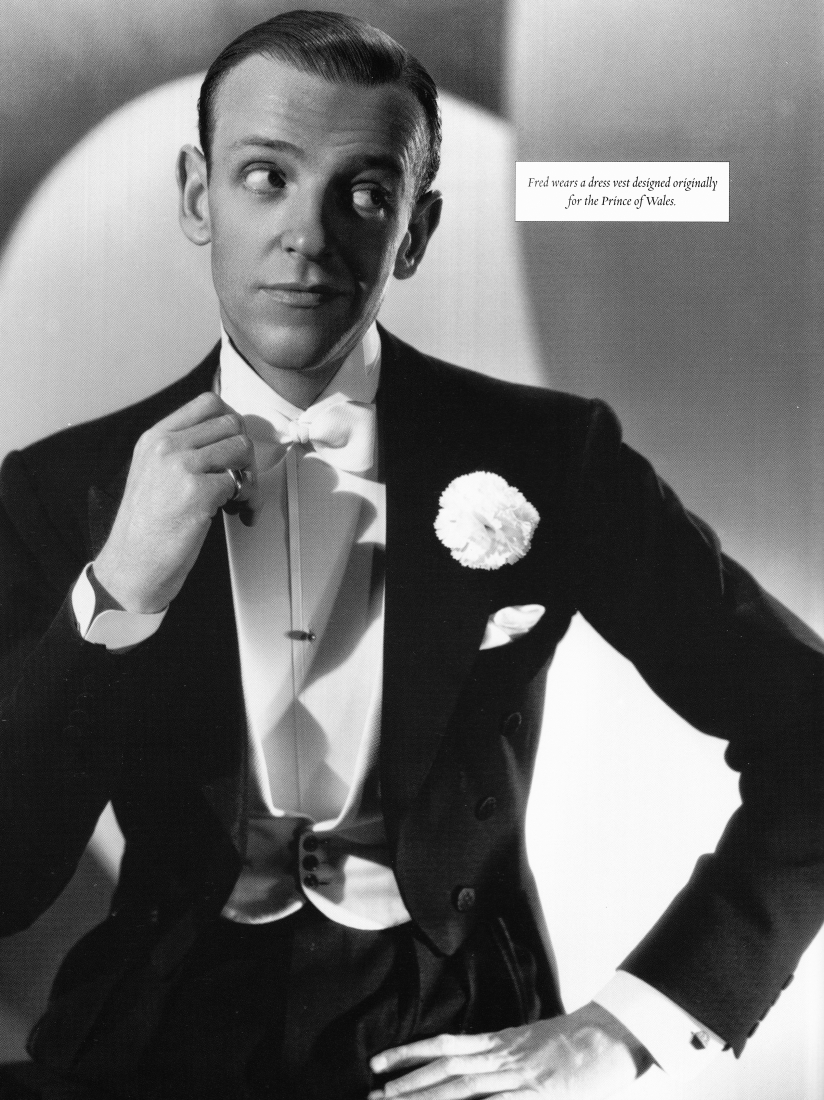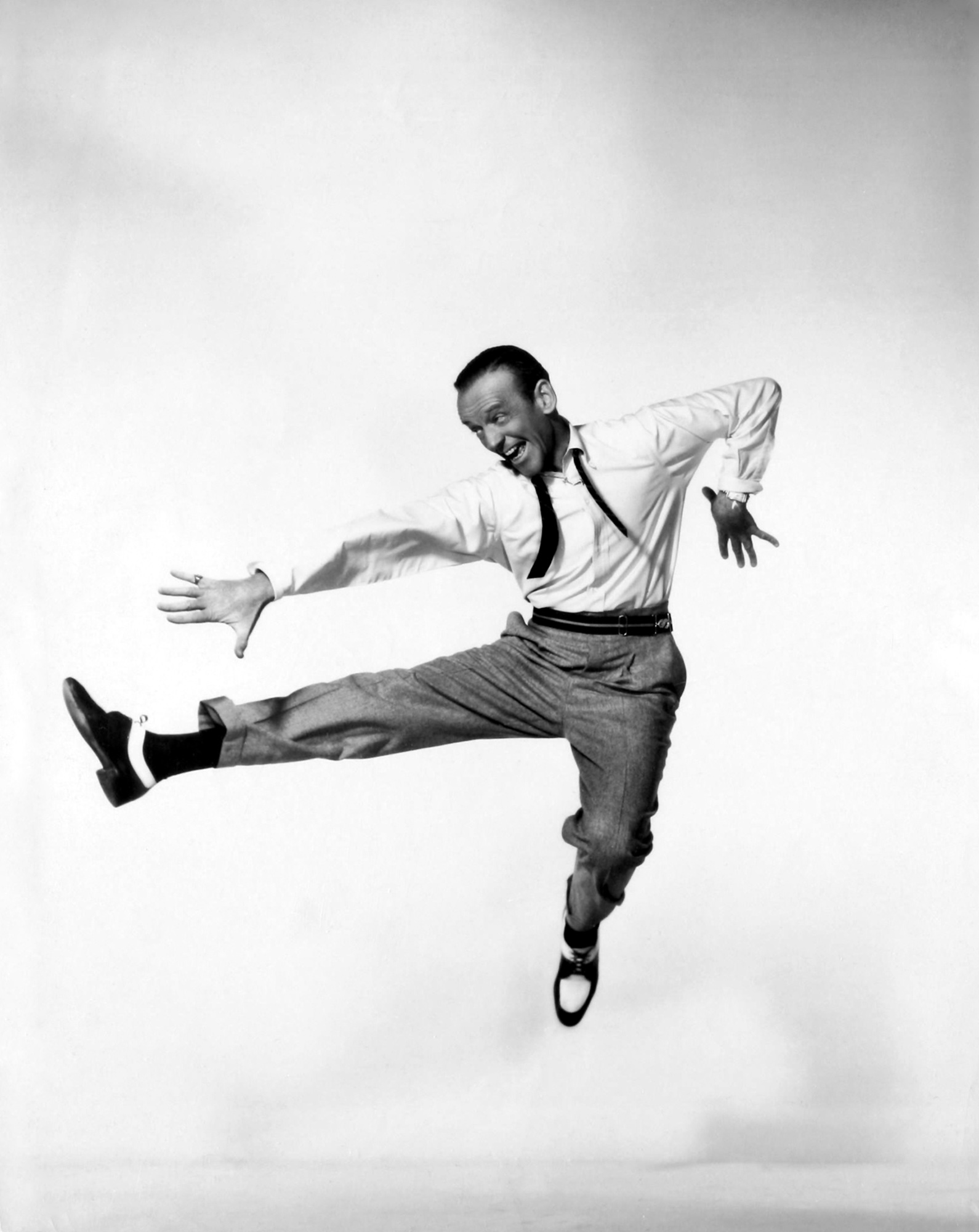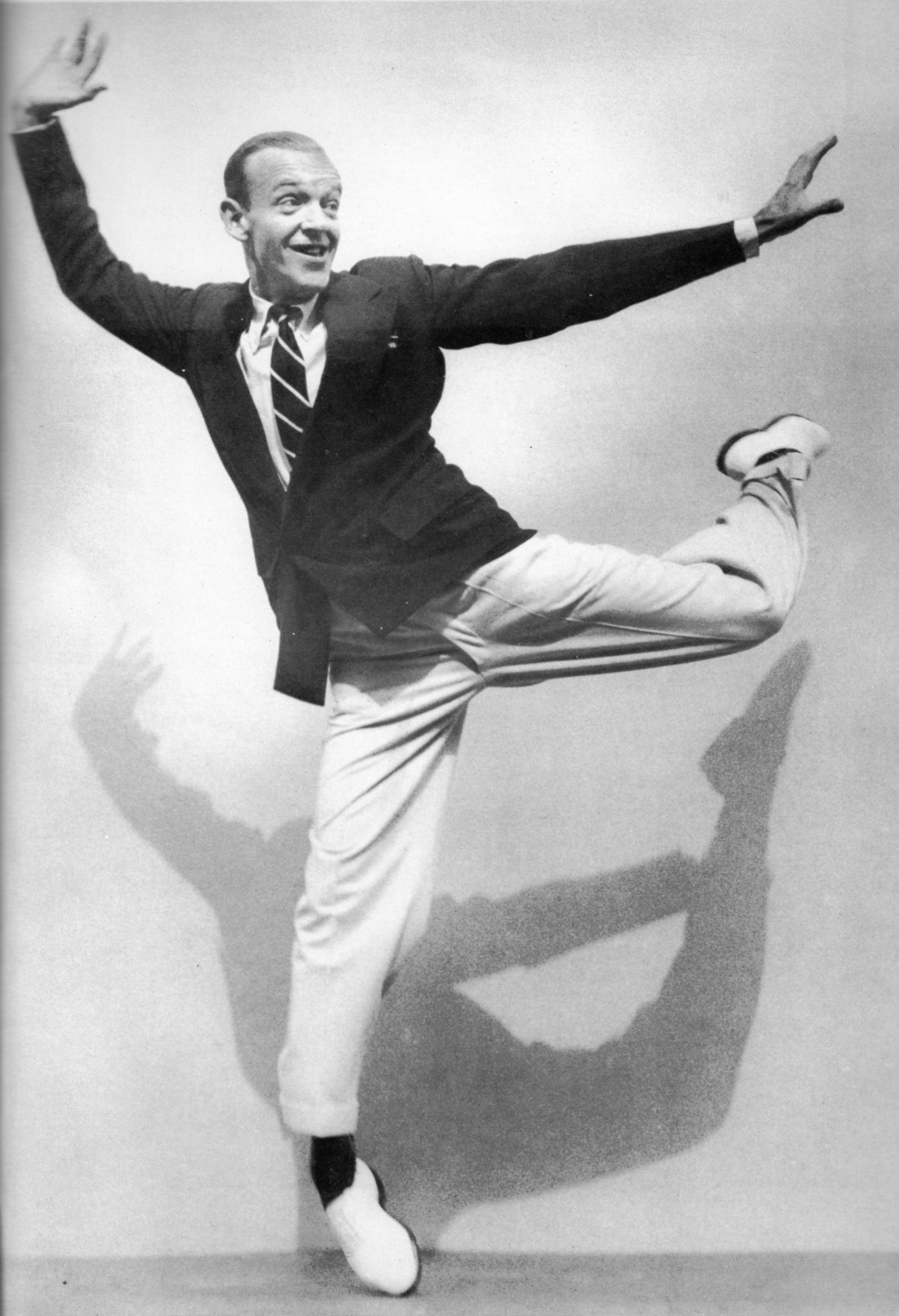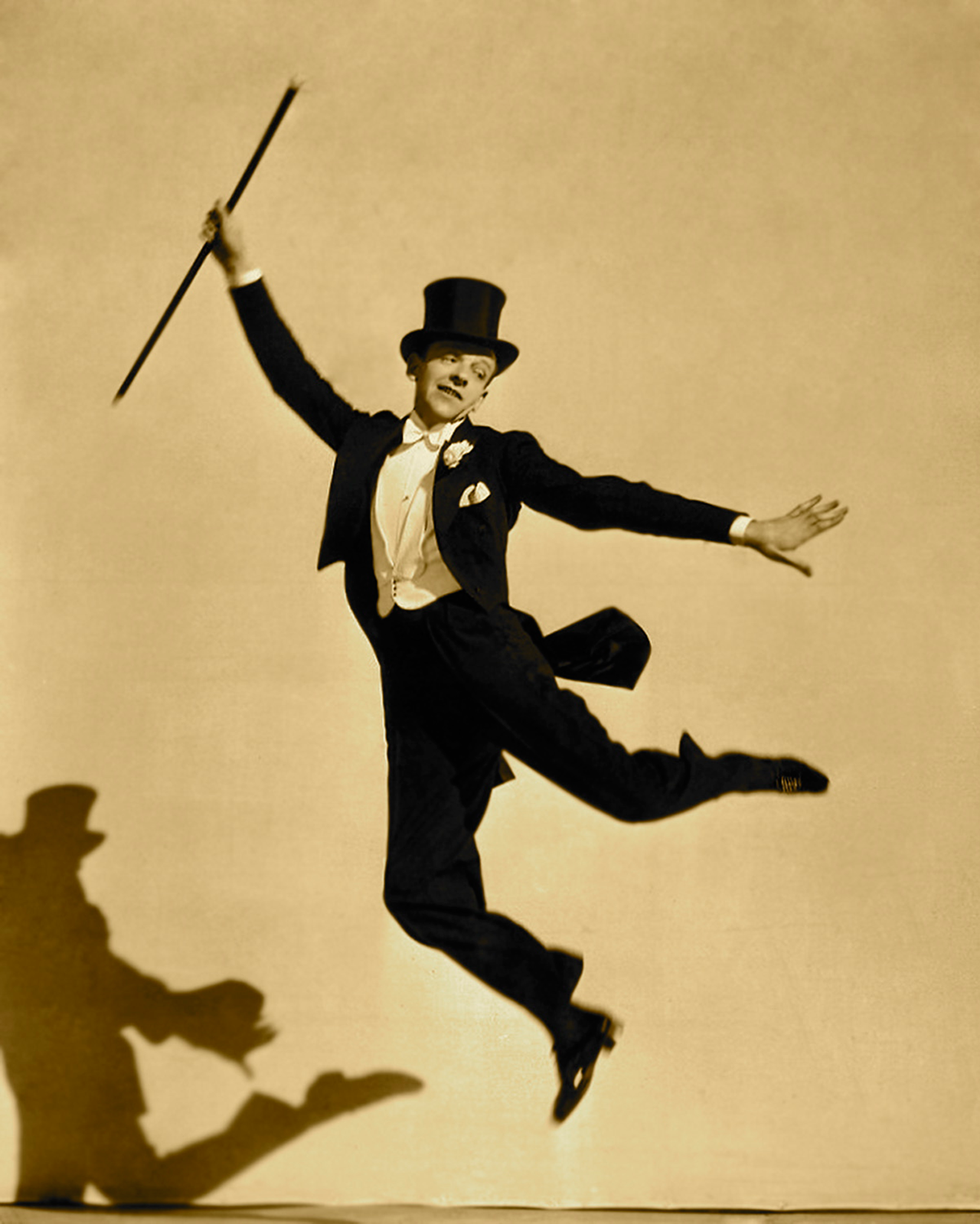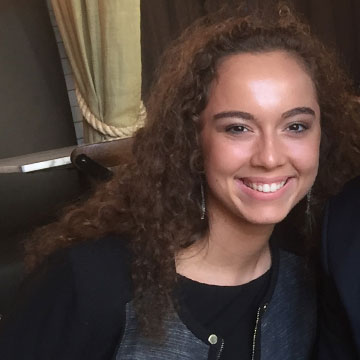Fred Astaire
See also: Categories: Instructors, Adjudicators, Dancers
- 1. Life and career
- 1.1 1899–1917: Early life and career
- 1.2 1917–1933: Stage career in Broadway and London
- 1.3 1933–1939: Astaire and Rogers at RKO
- 1.4 1940–1947: Drifting to an early retirement
- 1.5 1948–1957: Productive years with MGM and second retirement
- 1.6 1957–1981: Branching out into televised dance and straight acting
- 2. Working methods and influence on filmed dance
- 3. Photo Gallery
- 4. Video Gallery
- 5. References
Life and career
1899–1917: Early life and career
Astaire was born in Omaha, Nebraska, the son of Johanna "Ann" and Frederic "Fritz" Austerlitz (born September 8, 1868 as Friedrich Emanuel Austerlitz). Astaire's mother was born in the United States to Lutheran German immigrants from East Prussia and Alsace. Astaire's father was born in Linz, Austria to Jewish parents who had converted to Roman Catholicism.After arriving in New York City at age 24 on October 26, 1892 and being inspected at Ellis Island, Astaire's father, hoping to find work in his brewing trade, moved to Omaha, Nebraska and landed a job with the Storz Brewing Company. Astaire's mother dreamed of escaping Omaha by virtue of her children's talents, after Astaire's sister, Adele Astaire, early on revealed herself to be an instinctive dancer and singer. She planned a "brother and sister act," which was common in vaudeville at the time. Although Astaire refused dance lessons at first, he easily mimicked his older sister's steps and took up piano, accordion, and clarinet.
When their father suddenly lost his job, the family moved to New York City in 1905 to launch the show business career of the children, who began training at the Alviene Master School of the Theatre and Academy of Cultural Arts.
Despite Adele and Fred's teasing rivalry, they quickly acknowledged their individual strengths, his durability and her greater talent. Fred and Adele's mother suggested they change their name to "Astaire," as she felt "Austerlitz" sounded reminiscent of the name of a battle. Family legend attributes the name to an uncle surnamed "L'Astaire."[9] They were taught dance, speaking, and singing in preparation for developing an act. Their first act was called Juvenile Artists Presenting an Electric Musical Toe-Dancing Novelty. Fred wore a top hat and tails in the first half and a lobster outfit in the second. In an interview, Astaire's daughter, Ava Astaire McKenzie, observed that they often put Fred in a top hat to make him look taller. The goofy act debuted in Keyport, New Jersey, in a "tryout theater." The local paper wrote, "the Astaires are the greatest child act in vaudeville.
By age 14, Fred had taken on the musical responsibilities for their act. He first met George Gershwin, who was working as a song plugger for Jerome H. Remick's music publishing company, in 1916. Fred had already been hunting for new music and dance ideas. Their chance meeting was to deeply affect the careers of both artists. Astaire was always on the lookout for new steps on the circuit and was starting to demonstrate his ceaseless quest for novelty and perfection. The Astaires broke into Broadway in 1917 with Over the Top, a patriotic revue. The Astaires performed for U.S. and Allied troops at this time too.
1917–1933: Stage career in Broadway and London
They followed up with several more shows, and of their work in "The Passing Show of 1918," Heywood Broun wrote: "In an evening in which there was an abundance of good dancing, Fred Astaire stood out ... He and his partner, Adele Astaire, made the show pause early in the evening with a beautiful loose-limbed dance."By this time, Astaire's dancing skill was beginning to outshine his sister's, though she still set the tone of their act and her sparkle and humor drew much of the attention, owing in part to Fred's careful preparation and strong supporting choreography.
During the 1920s, Fred and Adele appeared on Broadway and on the London stage in shows such as Jerome Kern's The Bunch and Judy (1922), George and Ira Gershwin's Lady Be Good (1924), and Funny Face (1927) and later in The Band Wagon (1931), winning popular acclaim with the theater crowd on both sides of the Atlantic. By then, Astaire's tap dancing was recognized as among the best, as Robert Benchley wrote in 1930, "I don't think that I will plunge the nation into war by stating that Fred is the greatest tap-dancer in the world." After the close of Funny Face, the Astaires went to Hollywood for a screen test (now lost) at Paramount Pictures but were not considered suitable for films.
They split in 1932 when Adele married her first husband, Lord Charles Arthur Francis Cavendish, a son of the Duke of Devonshire. Fred Astaire went on to achieve success on his own on Broadway and in London with The Gay Divorcee, while considering offers from Hollywood. The end of the partnership was traumatic for Astaire but stimulated him to expand his range. Free of the brother-sister constraints of the former pairing and with new partner Claire Luce he created a romantic partnered dance to Cole Porter's "Night and Day," which had been written for The Gay Divorcee. Luce stated that she had to encourage him to take a more romantic approach: "Come on, Fred, I'm not your sister, you know."[19]:6 The success of the stage play was credited to this number and, when recreated in the film version of the play The Gay Divorcee (1934), it ushered in a new era in filmed dance.[19]:23,26,61 Recently, film footage taken by Fred Stone of Astaire performing in Gay Divorcee with Luce's successor, Dorothy Stone, in New York in 1933 was uncovered by dancer and historian Betsy Baytos and now represents the earliest known performance footage of Astaire.
1933–1939: Astaire and Rogers at RKO
According to Hollywood folklore, a screen test report on Astaire for RKO Radio Pictures, now lost along with the test, is reported to have read: "Can't sing. Can't act. Balding. Can dance a little." The producer of the Astaire-Rogers pictures, Pandro S. Berman, claimed he had never heard the story in the 1930s and that it only emerged years later. Astaire later insisted that the report had actually read: "Can't act. Slightly bald. Also dances". In any case, the test was clearly disappointing, and David O. Selznick, who had signed Astaire to RKO and commissioned the test, stated in a memo, "I am uncertain about the man, but I feel, in spite of his enormous ears and bad chin line, that his charm is so tremendous that it comes through even on this wretched test." However, this did not affect RKO's plans for Astaire, first lending him for a few days to MGM in 1933 for his Hollywood debut, where he appeared as himself dancing with Joan Crawford in the successful musical film Dancing Lady.Having already been linked to his sister Adele on stage, Astaire was initially very reluctant to become part of another dance team. He wrote his agent, "I don't mind making another picture with her, but as for this 'team' idea, it's 'out!' I've just managed to live down one partnership and I don't want to be bothered with any more." He was persuaded by the obvious public appeal of the Astaire-Rogers pairing. The partnership, and the choreography of Astaire and Hermes Pan, helped make dancing an important element of the Hollywood film musical. Astaire and Rogers made nine films together, including The Gay Divorcee, Roberta (1935), Top Hat (1935), Follow the Fleet (1936), Swing Time (1936), Shall We Dance (1937), and Carefree (1938). Six out of the nine Astaire-Rogers musicals became the biggest moneymakers for RKO; all of the films brought a certain prestige and artistry that all studios coveted at the time. Their partnership elevated them both to stardom; as Katharine Hepburn reportedly said, "He gives her class and she gives him sex appeal."
Astaire is credited with two important innovations in early film musicals. First, he insisted that the (almost stationary) camera film a dance routine in a single shot, if possible, while holding the dancers in full view at all times. Astaire famously quipped: "Either the camera will dance, or I will." Astaire maintained this policy from The Gay Divorcee (1934) onwards (until overruled by Francis Ford Coppola, who directed Finian's Rainbow (1968), Astaire's last film musical). Astaire's style of dance sequences thus contrasted with the Busby Berkeley musicals, which were known for dance sequences filled with extravagant aerial shots, quick takes, and zooms on certain areas of the body, such as the arms or legs. Second, Astaire was adamant that all song and dance routines be seamlessly integrated into the plotlines of the film. Instead of using dance as spectacle as Busby Berkeley did, Astaire used it to move the plot along. Typically, an Astaire picture would include a solo performance by Astaire—which he termed his "sock solo"—a partnered comedy dance routine, and a partnered romantic dance routine.
Astaire was still unwilling to have his career tied exclusively to any partnership, however. He negotiated with RKO to strike out on his own with A Damsel in Distress in 1937 with an inexperienced, non-dancing Joan Fontaine, unsuccessfully as it turned out. He returned to make two more films with Rogers, Carefree (1938) and The Story of Vernon and Irene Castle (1939). While both films earned respectable gross incomes, they both lost money because of increased production costs and Astaire left RKO, after being labeled "Box Office Poison" by the Independent Film Journal. Astaire was reunited with Rogers in 1949 at MGM for their final outing, The Barkleys of Broadway, the only one of their films together to be shot in Technicolor.
1940–1947: Drifting to an early retirement
In 1939, Astaire left RKO to freelance and pursue new film opportunities, with mixed though generally successful outcomes. Throughout this period, Astaire continued to value the input of choreographic collaborators and, unlike the 1930s when he worked almost exclusively with Hermes Pan, he tapped the talents of other choreographers in an effort to continually innovate. His first post-Ginger dance partner was the redoubtable Eleanor Powell—considered the finest female tap-dancer of her generation—in Broadway Melody of 1940 where they performed a celebrated extended dance routine to Cole Porter's "Begin the Beguine." In his autobiography Steps in Time, Astaire remarked, "She 'put 'em down like a man,' no ricky-ticky-sissy stuff with Ellie. She really knocked out a tap dance in a class by herself."He played alongside Bing Crosby in Holiday Inn (1942) and later Blue Skies (1946) but, in spite of the enormous financial success of both, was reportedly dissatisfied with roles where he lost the girl to Crosby. The former film is particularly remembered for his virtuoso solo dance to "Let's Say it with Firecrackers" while the latter film featured an innovative song and dance routine to a song indelibly associated with him: "Puttin' on the Ritz." Other partners during this period included Paulette Goddard in Second Chorus (1940), in which he dance-conducted the Artie Shaw orchestra.
His next partner, Lucille Bremer, was featured in two lavish vehicles, both directed by Vincente Minnelli: the fantasy Yolanda and the Thief, which featured an avant-garde surrealistic ballet, and the musical revue Ziegfeld Follies (1946), which featured a memorable teaming of Astaire with Gene Kelly to "The Babbit and the Bromide," a Gershwin song Astaire had introduced with his sister Adele back in 1927. While Follies was a hit, Yolanda bombed at the box office and Astaire, ever insecure and believing his career was beginning to falter, surprised his audiences by announcing his retirement during the production of Blue Skies (1946), nominating "Puttin' on the Ritz" as his farewell dance.
After announcing his retirement in 1946, Astaire concentrated on his horse-racing interests and in 1947 founded the Fred Astaire Dance Studios, which he subsequently sold in 1966.
1948–1957: Productive years with MGM and second retirement
However, he soon returned to the big screen to replace the injured Kelly in Easter Parade (1948) opposite Judy Garland, Ann Miller, and Peter Lawford and for a final reunion with Rogers (replacing Judy Garland) in The Barkleys of Broadway (1949). Both of these films revived Astaire's popularity and in 1950 he starred in two musicals - one for M-G-M - Three Little Words with Vera-Ellen and Red Skelton and one on loan-out to Paramount - Let's Dance with Betty Hutton. While Three Little Words did quite well at the box office, Let's Dance was a financial disappointment. Royal Wedding (1951) with Jane Powell proved to be very successful, but The Belle of New York (1952) with Vera-Ellen was a critical and box-office disaster. The Band Wagon (1953), which is considered to be one of the finest musicals ever made, received rave reviews from critics and drew huge crowds. But because of its excessive cost, it failed to make a profit on its first release. Soon after, Astaire, along with all the other remaining stars at M-G-M, was let go from his contract because of the advent of television and the downsizing of film production. In 1954, Astaire was about to start work on a new musical, Daddy Long Legs (1955) with Leslie Caron at 20th Century Fox, when his wife Phyllis became ill and suddenly died of lung cancer. Astaire was so bereaved that he wanted to shut down the picture and offered to pay the production costs out of his own pocket. However, Johnny Mercer (the film's composer) and Fox studio executives convinced him that work would be the best thing for him at that time. When Daddy Long Legs was released in 1955, it did only moderately well at the box office. His next film for Paramount, Funny Face (1957), teamed him with Audrey Hepburn and Kay Thompson and despite the sumptuousness of the production and the songs by the Gershwins, it failed to make back its cost. Similarly, Astaire's next project - his final musical at M-G-M, Silk Stockings (1957), in which he co-starred with Cyd Charisse, also lost money at the box office. As a result, Astaire withdrew from motion pictures for two years.1957–1981: Branching out into televised dance and straight acting
Astaire did not retire from dancing completely. He made a series of four highly rated Emmy Award-winning musical specials for television in 1958, 1959, 1960, and 1968, each featuring Barrie Chase, with whom Astaire enjoyed an Indian summer of dance creativity. The first of these programs, 1958's An Evening with Fred Astaire, won nine Emmy Awards, including "Best Single Performance by an Actor" and "Most Outstanding Single Program of the Year." It was also noteworthy for being the first major broadcast to be prerecorded on color videotape and has recently been restored. The restoration won a technical Emmy in 1988 for Ed Reitan, Don Kent, and Dan Einstein, who restored the original videotape, transferring its contents to a modern format and filling in gaps where the tape had deteriorated with kinescope footage. Astaire personally won the Emmy for Best Single Performance by an Actor but the choice had a controversial backlash because many felt that his dancing in the special was not the type of "acting" for which the award was designed. At one point Astaire even offered to return the award, but the Television Academy refused to consider it.Astaire played the role of Julian Osborne, a non-dancing acting role, in the 1959 movie On the Beach and was nominated for a Golden Globe Best Supporting Actor award for his performance, losing to Stephen Boyd in Ben Hur. Astaire appeared in non-dancing roles in three additional films and several television series from 1957 to 1969.
Astaire's last major musical film was Finian's Rainbow (1968), directed by Francis Ford Coppola. He shed his white tie and tails to play an Irish rogue who believes if he buries a crock of gold in the shadows of Fort Knox it will multiply. His dance partner was Petula Clark, who portrayed his skeptical daughter. He admitted to being as nervous about singing with her as she confessed to being apprehensive about dancing with him. Unfortunately, the film was a box-office failure, though it has gained a strong reputation over the years since its release.
Working methods and influence on filmed dance
Astaire was a virtuoso dancer, able to convey light-hearted venturesomeness or deep emotion when called for. His technical control and sense of rhythm were astonishing. Long after the photography for the solo dance number "I Want to Be a Dancin' Man" was completed for the 1952 feature The Belle of New York, it was decided that Astaire's humble costume and the threadbare stage set were inadequate and the entire sequence was reshot. The 1994 documentary That's Entertainment! III shows the two performances side-by-side in split screen. Frame for frame, the two performances are absolutely identical, down to the subtlest gesture.Astaire's execution of a dance routine was prized for its elegance, grace, originality, and precision. He drew from a variety of influences, including tap and other black rhythms, classical dance, and the elevated style of Vernon and Irene Castle to create a uniquely recognizable dance style which greatly influenced the American Smooth style of ballroom dance and set standards against which subsequent film dance musicals would be judged. He termed his eclectic approach his "outlaw style," an unpredictable and instinctive blending of personal artistry. His dances are economical yet endlessly nuanced. As Jerome Robbins stated, "Astaire's dancing looks so simple, so disarming, so easy, yet the understructure, the way he sets the steps on, over or against the music, is so surprising and inventive." Astaire further observed:
Working out the steps is a very complicated process—something like writing music. You have to think of some step that flows into the next one, and the whole dance must have an integrated pattern. If the dance is right, there shouldn't be a single superfluous movement. It should build to a climax and stop! With very few exceptions, Astaire created his routines in collaboration with other choreographers, primarily Hermes Pan. They would often start with a blank slate:
For maybe a couple of days we wouldn't get anywhere—just stand in front of the mirror and fool around... Then suddenly I'd get an idea or one of them would get an idea... So then we'd get started... You might get practically the whole idea of the routine done that day, but then you'd work on it, edit it, scramble it, and so forth. It might take sometimes as long as two, three weeks to get something going.
Frequently, a dance sequence was built around two or three principal ideas, sometimes inspired by his own steps or by the music itself, suggesting a particular mood or action. Many of his dances were built around a "gimmick," such as dancing on the walls in "Royal Wedding" or dancing with his shadows in Swing Time, that he or his collaborator had thought up earlier and saved for the right situation. They would spend weeks creating all the dance sequences in a secluded rehearsal space before filming would begin, working with a rehearsal pianist (often the composer Hal Borne) who in turn would communicate modifications to the musical orchestrators.
His perfectionism was legendary; however, his relentless insistence on rehearsals and retakes was a burden to some. When time approached for the shooting of a number, Astaire would rehearse for another two weeks and record the singing and music. With all the preparation completed, the actual shooting would go quickly, conserving costs. Astaire agonized during the entire process, frequently asking colleagues for acceptance for his work. As Vincente Minnelli stated, "He lacks confidence to the most enormous degree of all the people in the world. He will not even go to see his rushes... He always thinks he is no good." As Astaire himself observed, "I've never yet got anything 100% right. Still it's never as bad as I think it is."
Photo Gallery
